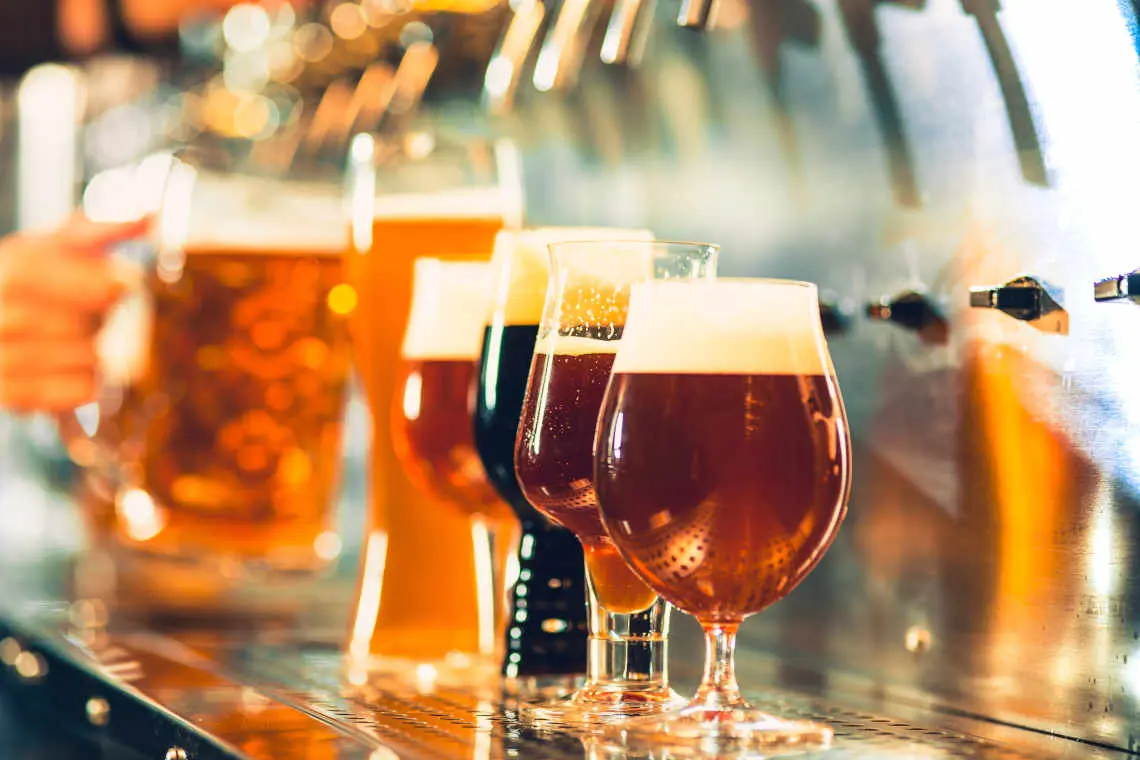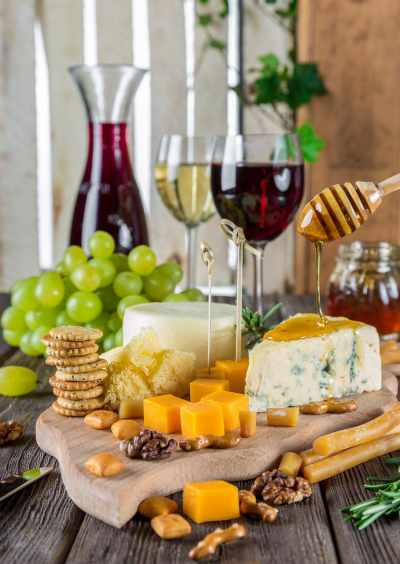酒精飲料市場研究

從精釀啤酒和精品葡萄酒到創新烈酒和雞尾酒,酒精飲料市場是文化傳統、消費趨勢和創意行銷的結合。這就是為什麼酒精飲料市場研究深入研究消費者的偏好、行為、購買模式以及生產商和零售商在這個不斷變化的市場中的策略。
市場結合了創新和機遇,從精釀啤酒廠到精品釀酒廠。這就是酒精飲料市場研究的用武之地。持續增長。
酒精飲料市場研究是對生產和銷售酒精飲料的行業的全面分析,涵蓋廣泛的產品,包括啤酒、葡萄酒、烈酒等。這項研究的重點是了解消費者的飲酒習慣、偏好和購買行為。它涉及研究口味偏好、消費場合、品牌認知以及人口變化對飲酒模式的影響等因素。
酒精飲料市場研究著眼於產品開發的趨勢,例如精釀啤酒、有機葡萄酒或低酒精飲料的興起。它探討了推動這些趨勢的因素以及它們如何與消費者群體產生共鳴。此外,這包括根據產品類型、價格範圍、地理區域和消費者人口統計等各種標準將市場劃分為細分市場,以便更好地了解和瞄準特定的客戶群。市場調查
這也涉及研究主要市場參與者的策略、市場份額、產品供應、行銷策略以及他們如何應對市場變化。酒精飲料市場研究通常包括全球視角,比較和對比不同地區和文化的酒精飲料消費模式和偏好。

酒精飲料市場研究變得比以往任何時候都更加重要。當今的消費者更加見多識廣,眼光更加敏銳,他們的偏好也在不斷變化,對工藝和手工飲料、有機和可持續選擇以及獨特的風味特徵越來越感興趣。同樣,消費者越來越關注健康和保健,這影響了酒精飲料的消費。因此,這些領域的研究對於評估市場的演變和規劃量身定制的策略至關重要,
此外,線上購物和數位行銷的興起改變了酒精飲料的行銷和銷售方式。市場研究對於了解這些數位策略的有效性和消費者在線購買行為至關重要。
酒精飲料業受到嚴格監管。稅收政策或廣告限制等法規變化可能會對市場產生重大影響。因此,該領域的研究對於應對這些監管環境至關重要。該行業也面臨來自傳統企業、新進業者和顛覆性品牌的日益激烈的競爭。在這種競爭環境中保持領先需要深入了解市場動態和競爭對手的策略。
酒精飲料市場研究的好處是廣泛的,可以提供重要的見解,可以推動策略決策並促進這個競爭激烈的行業的成長。以下是一些主要優點:
- 知情的產品開發: 研究見解指導企業開發新產品或改進現有產品,以符合當前的消費者趨勢和偏好。這可能涉及口味、包裝或創造更健康的飲料選擇的創新。
- 有效的行銷策略: 了解消費者行為和偏好使公司能夠更有效地制定行銷策略。市場研究可以為有針對性的廣告、促銷活動和品牌定位提供資訊。
- 市場區隔與目標定位: 市場研究有助於根據人口統計、生活方式和消費模式等各種標準對市場進行細分,使企業能夠針對特定的客戶群提供量身定制的產品。
- 競爭優勢: 透過對市場趨勢、消費者偏好和競爭對手活動的詳細了解,企業可以透過預測市場變化並主動回應來獲得競爭優勢。
- 風險緩解: 在酒精飲料等受到高度監管的行業中,市場研究有助於了解和駕馭監管環境,並降低違規風險。
- 銷售和分銷優化: 對銷售趨勢和分銷管道的洞察使企業能夠優化其供應鏈和分銷策略,從而擴大市場覆蓋範圍和效率。
- 投資決策: 市場研究為投資者和企業提供了市場潛力和成長領域的清晰圖景,有助於做出明智的投資決策。
- 全球市場洞察: 對於尋求國際擴張的企業來說,市場研究可以提供有關全球市場動態、文化偏好和不同地區監管環境的見解。
- 消費者參與: 透過市場研究了解消費者的態度和回饋有助於企業更有效地與受眾互動,建立品牌忠誠度和宣傳。
啤酒廠利用市場研究來了解消費者偏好、開發新產品並進行有效的行銷活動。百威英博、喜力和帝亞吉歐等公司依靠市場研究來維持在全球酒精飲料市場的競爭力。
經銷商和零售商進行市場研究,以確定庫存哪些酒精飲料品牌和產品,並確定可能影響消費者需求的趨勢。沃爾瑪、樂購和 Total Wine & More 等零售商依靠市場研究來優化其酒精飲料產品。
釀酒商協會和美國蒸餾酒委員會等行業協會利用市場研究來追蹤行業趨勢,倡導政策變化,並為其成員提供有價值的見解。
投資者和財務分析師依靠酒精飲料市場研究來評估酒精飲料公司的表現和成長潛力,幫助他們做出明智的投資決策。
成功的酒精飲料市場研究需要仔細的規劃和執行。一些關鍵的成功因素包括:
- 明確的目標: 建立明確的研究目標對於確保研究的重點和與業務需求的相關性至關重要。無論目標是了解消費者偏好、評估市場趨勢或評估品牌認知,擁有明確的目標對於成功至關重要。
- 品質數據收集: 收集高品質的數據對於獲得準確可靠的見解至關重要。這可能涉及結合調查、焦點小組和數據分析等研究方法,以收集準確反映目標市場的綜合數據。
- 分析與解讀: 收集資料後,必須對其進行有效的分析和解釋。這涉及識別模式、趨勢和見解,為策略決策提供資訊。
- 可行的建議: 酒精飲料市場研究的最終目標是提供可行的建議以推動業務成長。這些建議應以研究結果為基礎,並根據企業的特定需求和目標量身定制。
新的數位接觸點正在開闢新的服務,例如飲料的送貨和線上購買。隨著客戶在購買前越來越多地研究品牌和產品,客戶旅程也不斷發展。全通路的興起使零售商能夠追蹤購買情況並統一跨通路的溝通。日益數位化的生活方式正在改變享用飲料的首選場所。
作為烈酒產品組合中商業機會的一部分,禮品(個人和企業)構成了具有策略重要性的領域。我們對超級奢侈禮品領域進行了研究,範圍包括烈酒、非烈酒和其他奢侈品。
- 了解當前和未來的機會圖
- 了解品牌的策略潛力空間。
- 了解高端和超豪華細分市場以及這兩個細分市場的品牌機會。
確定酒精飲料市場研究的最佳時機對於最大限度地提高其有效性和相關性至關重要。在業務發展的特定場景和階段進行這項研究尤其有益。以下是應考慮進行此項研究的一些關鍵情況:
- 在推出新產品前: 在將新的酒精飲料推向市場之前,研究可以深入了解消費者偏好、潛在需求和競爭格局,指導產品開發和推出策略。
- 在品牌發展或品牌重塑期間: 在開發新品牌或重塑現有產品時,市場研究對於了解目標受眾、市場定位和品牌認知至關重要。
- 在探索市場拓展的同時: 考慮拓展新地域市場或瞄準新客戶群的企業可以從酒精飲料市場研究中受益,以了解當地口味、文化偏好和監管環境。
- 對於策略規劃: 將市場研究納入策略性業務規劃有助於識別成長機會、潛在細分市場和市場滲透的實用策略。
- 監理變化如下: 為了應對影響酒精飲料行業的法規,例如稅收或廣告政策,市場研究有助於了解這些變化的影響並相應地調整業務策略。
- 為了在競爭中保持領先: 了解競爭對手的策略和績效對於維持競爭優勢至關重要。定期市場研究可以深入了解競爭對手的活動和市場變化。
- 評估消費者行為變化時: 由健康趨勢或經濟變化等因素驅動的消費者行為變化需要進行市場研究,以確保產品和行銷策略與消費者需求保持一致。
酒精飲料市場的特點是既有歷史悠久的巨頭,也有新興的挑戰者,每一個都在塑造產業趨勢方面發揮重要作用。以下是該市場的一些主要參與者:
- 百威英博: 作為全球最大的啤酒公司,百威英博擁有超過 500 個啤酒品牌的廣泛產品組合,包括百威、時代啤酒和貝克啤酒。
- 喜力: 該公司以其標誌性的喜力啤酒而聞名,是世界領先的啤酒製造商之一,擁有廣泛的國際和本地品牌。
- 帝亞吉歐: 帝亞吉歐是一家領先的跨國酒精飲料公司,以其豐富的烈酒產品組合而聞名,其中包括尊尼獲加、斯米諾和百利甜酒以及啤酒和葡萄酒產品。
- 保樂力加: 該公司擁有許多受歡迎的烈酒和葡萄酒,包括絕對伏特加、詹姆森愛爾蘭威士忌和杰卡斯,使其成為全球市場的重要參與者。
- 星座品牌: Constellation Brands 是葡萄酒和烈酒行業的主要參與者,以 Robert Mondavi 葡萄酒、Svedka Vodka 等品牌而聞名,並且還涉足啤酒領域。
- 三得利控股有限公司: 三得利是日本跨國釀酒和蒸餾公司集團,以其山崎和響等威士忌品牌而聞名,也生產啤酒和其他飲料。
- 波士頓啤酒公司: 精釀啤酒領域的領導者,以塞繆爾·亞當斯·波士頓啤酒 (Samuel Adams Boston Lager) 聞名。該公司也涉足硬蘋果酒和調味麥芽飲料。
在酒精飲料市場的多元化格局中,特定細分市場脫穎而出,成為領導者,推動成長並吸引消費者的興趣。了解這些領先細分市場對於尋求利用市場機會並有效駕馭競爭動態的企業至關重要。
- 精釀啤酒: 在消費者對獨特風味和手工釀造技術日益增長的需求的推動下,精釀啤酒市場持續強勁成長。精釀啤酒廠以注重品質和創新而聞名,吸引了許多尋求正宗和獨特飲用體驗的消費者。
- 烈酒: 在烈酒類別中,由於消費者願意購買更高品質的產品,優質和超優質產品越來越受歡迎。尤其是精釀烈酒,在市場上佔有了一席之地,吸引了追求小批量工藝和手工風格的挑剔飲酒者。
- 即飲 (RTD) 雞尾酒: 近年來,在消費者對便利性和行動消費的渴望的推動下,即飲雞尾酒細分市場出現了顯著增長。即飲雞尾酒憑藉一系列創新口味和包裝形式,迎合忙碌的生活方式,並為進入酒精飲料市場的新消費者提供了一個便捷的切入點。
- 葡萄酒: 雖然葡萄酒消費傳統上與成熟市場聯繫在一起,但高端化的興起以及天然和有機葡萄酒的日益普及等新興趨勢正在重塑行業格局。
許多因素影響酒精飲料市場的成長和演變。了解這些市場成長因素對於尋求有效利用機會和應對挑戰的企業至關重要。
- 不斷變化的消費者偏好: 消費者偏好對於推動市場成長至關重要,因為向高端化、健康意識和體驗式消費的轉變塑造了對酒精飲料的需求。透過提供創新產品和體驗來適應不斷變化的消費者口味的企業能夠充分利用新興趨勢並推動市場成長。
- 拓展分銷通路: 包括電子商務平台、專業零售商和自營店在內的分銷管道的激增,為接觸消費者和擴大市場範圍提供了新的途徑。採用全通路分銷策略並與主要利害關係人建立策略合作夥伴關係的企業可以增強其市場影響力,並利用不同管道對酒精飲料不斷增長的需求。
- 監理環境: 稅收改革、許可要求和行銷限制等法規變化可能會影響消費者行為和市場競爭力。隨時了解監管發展並主動適應合規要求的企業可以在不斷變化的監管環境中降低風險並抓住機會。
- 創新和產品開發: 創新是酒精飲料產業市場成長的核心,推動產品差異化、消費者參與和市場擴張。投資研發以創造新穎的配方、包裝設計和行銷策略的企業可以在擁擠的市場中脫穎而出,並吸引尋求獨特和真實體驗的挑剔消費者的注意。
- 全球化與市場擴張: 酒精飲料市場的日益全球化為企業提供了將業務範圍擴大到新的地理市場並利用不同消費者群體的機會。可支配收入不斷增加、消費模式不斷變化的新興經濟體為市場擴張和投資提供了肥沃的土壤,為企業持續成長和多元化提供了途徑。
確定主要目標受眾對於在酒精飲料市場中運作的企業至關重要。它使他們能夠客製化行銷策略、產品供應和分銷管道,以有效地接觸和吸引他們想要的消費者。幾個關鍵的目標受眾群體極大地推動了酒精飲料行業的需求並塑造了市場趨勢。
- 年輕人: 年輕人(通常年齡在 21 歲至 35 歲之間)是酒精飲料市場的關鍵人口。這一人群的特點是喜歡冒險的品味、社交生活方式以及願意嘗試新產品和品牌。
- 富裕消費者: 可支配收入較高的富裕消費者構成了酒精飲料市場的另一個關鍵目標對象。該細分市場重視品質、獨特性和聲望,通常傾向於優質和超優質酒精飲料。
- 注重健康的消費者: 該細分市場尋求符合他們對平衡、節制和更健康生活方式選擇的渴望的產品。針對注重健康的消費者的企業通常強調低酒精或無酒精替代品、有機成分和透明標籤,以滿足他們不斷變化的偏好和需求。
受消費者口味、創新技術和更廣泛的社會變革的影響,酒精飲料市場不斷發展。了解這些趨勢對於在該領域運營的企業至關重要。以下是當前市場的一些主要趨勢:
- 手工藝和手工產品的興起: 在追求獨特風味、優質原料和真實體驗的消費者的推動下,對精釀啤酒、手工烈酒和精品葡萄酒的需求不斷增長。
- 健康與保健影響: 一個顯著的趨勢是消費者對更健康的選擇越來越感興趣。其中包括低酒精或無酒精飲料、有機產品以及具有額外健康益處的飲料。
- 高階化: 消費者願意為優質酒精飲料支付更高的價格。這種趨勢在各個類別中都很明顯,包括高端和超高端品牌正在獲得市場份額的類別。
- 口味創新: 口味不斷創新,尤其是烈酒和即飲 (RTD) 雞尾酒。獨特和異國情調的口味正在被引入,以吸引尋求新飲酒體驗的消費者。
- 永續性和道德生產: 環境永續性和道德生產實踐變得越來越重要。消費者對飲料的生產方式更了解和感興趣,從而更加重視永續實踐和本地採購。
- 數位行銷和社群媒體影響: 數位行銷策略和社交媒體在品牌建立和消費者參與中發揮著至關重要的作用。品牌利用數位平台說故事、客戶互動和有針對性的行銷。
當企業與 SIS International 進行酒精飲料市場研究時,他們可以預測有價值的見解,從而推動明智的決策和策略規劃。透過深入研究市場動態、消費者行為和新興趨勢,我們對酒精飲料格局有全面的了解。
- 市場趨勢與動態: SIS International 的研究揭示了塑造酒精飲料市場的普遍趨勢,從高端化的興起到對低酒精和非酒精替代品不斷增長的需求。企業可以透過分析市場動態並利用不斷變化的消費者偏好來保持領先地位。
- 消費者洞察: 了解消費者行為的複雜性對於酒精飲料產業至關重要。 SIS International 的研究深入探討消費者偏好、購買模式和品牌認知,為企業提供洞察力,以製定與目標受眾產生共鳴的有針對性的行銷策略和產品創新。
- 競品分析: SIS International 的研究重點在於競爭對手的活動和市場定位,幫助企業清楚了解其競爭格局。企業可以透過與行業同行進行比較並確定差異化領域來完善其策略並增強其市場地位。
- 策略建議: 憑藉豐富的數據驅動見解,SIS 可以根據每個客戶的獨特需求和目標提供可行的建議。無論是進入新市場、推出創新產品或優化分銷管道,企業都可以依靠 SIS International 提供策略指導,推動酒精飲料市場的成長和獲利。
酒精飲料市場研究的動態性質為企業提供了各種創新、擴展以及以新方式與消費者聯繫的機會。以下是企業可以利用的一些關鍵領域:
- 產品創新: 對獨特風味和體驗的需求不斷增長,為產品開發創新提供了機會。這包括製作新的風味特徵、開發無酒精或低酒精變體,以及嘗試可持續成分。
- 擴展到手工藝和手工藝領域: 隨著精釀啤酒、手工烈酒和精品葡萄酒的日益普及,企業進入或擴大在這些領域的業務具有巨大的潛力。
- 關注健康和保健趨勢: 透過提供有機、低熱量或無酒精的選擇來利用健康和保健趨勢,可以幫助企業吸引註重健康的消費者。
- 永續與道德實踐: 實施和促進永續和道德的生產實踐可以吸引具有環保意識的消費者,並有助於建立積極的品牌形象。
- 瞄準優質消費者: 消費者願意為高品質、優質酒精飲料支付更高價格的高端化趨勢提供了機會。
- 全球市場拓展: 探索和進入新的地域市場可以提供成長機會,特別是在可支配收入增加和消費者偏好變化的新興市場。
雖然酒精飲料市場研究提供了許多機會,但它也提出了企業必須應對的一些挑戰才能成功。應對這些挑戰對於維持這個充滿活力的行業的競爭力和成長至關重要。以下是一些主要挑戰:
- 監理合規性: 應對酒精飲料生產、分銷和行銷的複雜且往往嚴格的法規是一項重大挑戰。
- 消費者偏好轉變: 習慣於傳統酒精飲料產品的企業可能會發現跟上快速變化的消費者偏好的步伐具有挑戰性,特別是在一個有影響力的健康和保健趨勢的時代。
- 激烈的競爭: 市場競爭非常激烈,許多知名品牌和新進業者都在爭奪消費者的注意力。在這樣的環境下,要實現產品差異化並贏得市場份額,就需要創新策略。
- 供應鏈管理: 從採購原料到分銷成品,管理可靠且高效的供應鏈可能很複雜。
- 行銷和品牌: 根據酒精飲料市場研究,以與消費者產生共鳴的方式有效行銷酒精飲料,同時遵守廣告法規和社會責任標準是一種微妙的平衡。
- 全球市場變化: 了解並適應不同國家和地區多樣化且不斷變化的市場條件、消費者口味和監管環境對於全球營運的企業來說是一項挑戰。
- 生產和分銷的技術創新: 技術進步可能會影響生產流程,重點關注永續性和效率。此外,包括電子商務和直接面向消費者的銷售在內的數位分銷管道預計將增長,為市場研究提供新的數據。
- 全球市場變化: 新興市場,特別是亞洲和非洲的成長潛力將成為重要的關注領域。市場研究必須適應這些地區獨特的文化、經濟和監管環境。
- 風味和產品創新: 在消費者好奇心和對新奇體驗的渴望的推動下,新口味和飲料類型的實驗預計將繼續下去。
- 數據分析與人工智慧的整合: 市場研究中的進階分析、人工智慧和機器學習將變得更加明顯,提供更深入的見解和預測能力。
- 消費者參與策略: 未來將更加重視建立直接的消費者關係。酒精飲料市場研究將著重於了解線上和線下消費者的參與偏好。
波特的五力分析提供了一個評估行業競爭動態和吸引力的框架,包括酒精飲料市場。透過評估買家和供應商的議價能力、新進入者的威脅、替代品的威脅以及競爭的強度,企業可以獲得對塑造行業盈利能力和競爭力的潛在力量的寶貴見解。
- 買家的議價能力: 在酒精飲料市場,購買者的議價能力可能因品牌忠誠度、產品差異化和分銷管道而異。擁有穩固消費者忠誠度的知名品牌可能在與零售商和分銷商談判定價和條款時擁有更大的籌碼。然而,買家可能會在競爭激烈和產品替代品充足的細分市場中發揮更大的影響力,從而壓低行業參與者的價格和利潤。
- 供應商的議價能力: 原料、包裝材料和配料供應商在酒精飲料行業中發揮著至關重要的作用。他們的議價能力會影響生產成本、供應鏈效率和產品品質。依賴專業或有限供應原料的行業可能會面臨更高的供應商力量,而那些能夠獲得多樣化和商品化投入的行業可能會享有更有利的談判地位。
- 新進入者的威脅: 考慮到品牌認知度、分銷網絡、監管障礙和規模經濟等因素,酒精飲料市場對於新進業者來說既有吸引力又充滿挑戰。擁有大量品牌資產和廣泛分銷管道的老牌企業可能會阻止新進入者進入市場。然而,市場中的利基細分市場或新興類別可能為創新新創公司和工藝品生產商提供立足點並顛覆傳統企業的機會。
- 替代品的威脅: 替代品的威脅對酒精飲料市場構成了重大挑戰,因為消費者有多種選擇,包括非酒精替代品。健康意識、不斷變化的消費者偏好和文化規範等因素可能會影響酒精飲料相對於無酒精啤酒、葡萄酒、烈酒和功能性飲料等替代品的需求。
- 競爭激烈程度: 酒精飲料市場的競爭特徵是品牌擴散、定價策略、行銷活動和分銷策略。老牌企業透過積極的行銷舉措、產品創新和策略合作夥伴關係來爭奪市場份額和消費者關注。此外,精釀啤酒和手工烈酒等領域的眾多小型獨立生產商加劇了競爭動態,導致價格競爭和差異化策略。
SIS International 的酒精飲料市場研究可以透過多種方式為酒精飲料行業的企業提供幫助:
- 市場研究專長: 憑藉在不同行業進行市場研究的豐富經驗,SIS 為客戶提供有關酒精飲料市場中的消費者偏好、市場趨勢和競爭動態的無與倫比的見解。透過利用先進的研究方法和強大的數據分析,我們的團隊提供可操作的見解,推動策略決策和業務績效。
- 全球影響力和本地專業知識: SIS International 的全球研究人員和分析師網絡為客戶提供跨關鍵地理區域的深入市場情報和本地化專業知識。我們為客戶提供洞察複雜的市場動態並利用全球機會的見解。
- 策略諮詢服務: 除了市場研究之外,SIS International 還提供策略諮詢服務,幫助客戶制定與其業務目標一致的客製化策略和可行的建議。從市場進入策略到品牌定位和產品創新,SIS 與客戶合作開發整體解決方案,推動酒精飲料市場的成長和獲利。
- 數據驅動的決策: SIS International 為客戶提供數據驅動的決策工具和方法,使他們能夠從市場研究結果中獲得可行的見解,並有效地確定計劃的優先順序。透過利用先進的分析和預測建模技術,我們的專家幫助客戶識別新興趨勢、預測市場變化並自信地利用成長機會。
- 持續支持與合作: SIS International 致力於在整個研究過程中為客戶提供持續的支援和協作。從專案啟動到實施和後續,SIS International 與客戶密切合作,確保滿足並超越他們的期望。


